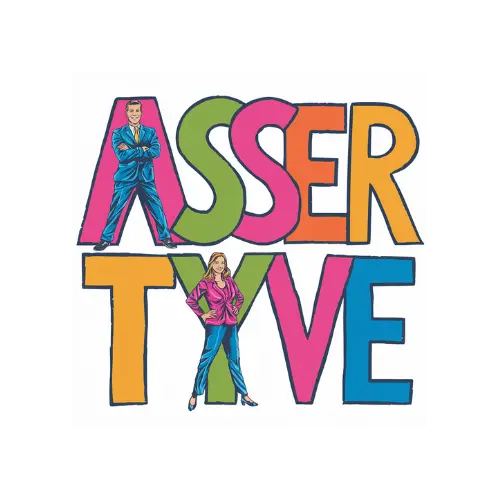Key Strategies for Effective Workplace Communication
Effective workplace communication is crucial for the success of any organization. One key strategy is to establish open and transparent channels of communication across all levels of the company. This can help foster a culture of trust and collaboration, ultimately leading to smoother operations and better outcomes.
Another important strategy is to encourage active listening among team members. By listening attentively and empathetically to others, misunderstandings can be minimized, and relationships can be strengthened. This can also create a more inclusive and supportive work environment where everyone feels valued and understood.
Understanding Different Communication Styles in the Workplace
Communication styles in the workplace can vary significantly from person to person. Some individuals may prefer direct and concise communication, getting straight to the point without much elaboration. On the other hand, some may value more detailed and descriptive communication, providing context and background information to support their points. It’s important to recognize and adapt to different communication styles to ensure effective and successful interactions with colleagues and superiors.
Moreover, understanding nonverbal communication cues is essential in grasping the full spectrum of communication styles in the workplace. Body language, facial expressions, gestures, and tone of voice can convey a wealth of information that may not be explicitly stated in words. Being attentive to these cues can help in interpreting messages accurately and responding appropriately to ensure smooth and productive communication exchanges.
Building Confidence in Professional Communication
Confidence in professional communication is key to establishing credibility and making a positive impact in the workplace. When expressing thoughts and ideas, it is important to speak with conviction and clarity, demonstrating assurance in the message being conveyed. Confidence can be cultivated through practice and preparation, ensuring that one is well-informed and ready to articulate thoughts effectively.
Additionally, maintaining open body language and making eye contact during conversations can also contribute to projecting confidence. These nonverbal cues can help convey a sense of assurance and attentiveness, further bolstering one’s credibility in professional interactions. By adopting these practices and techniques, individuals can enhance their confidence in communication and effectively engage with colleagues and superiors in a professional setting.
Active Listening Techniques for Better Workplace Interactions
Active listening is a crucial skill in the workplace that can greatly enhance communication and foster better relationships between colleagues. By fully engaging in the conversation with the speaker, you demonstrate respect and genuine interest in the topic being discussed. This can lead to a more open and productive dialogue, as well as help in building trust and rapport with your coworkers.
One effective active listening technique is to maintain eye contact with the speaker and nod occasionally to show that you are actively participating in the conversation. Avoid interrupting or formulating your response while the other person is speaking, as this can signal that you are not truly listening. Instead, focus on understanding the speaker’s perspective and ask clarifying questions to ensure that you have grasped their message accurately.
• Maintaining eye contact with the speaker and nodding occasionally
• Avoiding interrupting or formulating a response while the other person is speaking
• Focusing on understanding the speaker’s perspective
• Asking clarifying questions to ensure accurate message comprehension
Active listening also involves mirroring the speaker’s body language and emotions to show empathy and understanding. By reflecting back what you have heard, you can confirm your understanding of the conversation and make the speaker feel valued and respected. Additionally, paraphrasing key points can help reinforce your comprehension of the topic while demonstrating that you are actively engaged in the discussion. This can lead to more meaningful interactions and stronger relationships in the workplace.
• Mirroring the speaker’s body language and emotions for empathy
• Reflecting back what you have heard to confirm understanding
• Paraphrasing key points for reinforcement of comprehension
By practicing active listening techniques in your daily interactions at work, you can improve communication, reduce misunderstandings, and create a more positive work environment. Not only does this benefit individual relationships within teams but also contributes to overall team productivity and success. So next time you find yourself in a conversation with a colleague, remember to engage fully by employing these active listening strategies for better workplace interactions.
• Improving communication through active listening techniques
• Reducing misunderstandings in workplace interactions
• Creating a positive work environment through effective communication
Setting Clear Expectations in Professional Communication
When it comes to professional communication, setting clear expectations is crucial for ensuring successful outcomes. Employees need to understand what is expected of them in terms of deadlines, deliverables, and quality standards. By clearly outlining these expectations from the start, managers can avoid misunderstandings and promote a more efficient work environment.
Clear expectations also help in fostering accountability and responsibility among team members. When everyone knows what is expected of them, they are more likely to take ownership of their tasks and work towards achieving the set goals. This not only improves productivity but also contributes to a more positive and collaborative work culture.
Dealing with Conflict in the Workplace
Conflict in the workplace is inevitable as employees may have differing opinions, priorities, or approaches to work. When conflict arises, it is crucial to address it promptly and constructively to maintain a healthy work environment. Open and honest communication is key in resolving conflicts effectively. Each party involved should have the opportunity to express their perspective and feelings without interruptions. This can help in clarifying misunderstandings and finding common ground for resolution. Additionally, active listening plays a vital role in conflict resolution, as it helps in understanding the underlying issues and emotions involved.
Acknowledging and validating the emotions of those in conflict is essential in finding a mutually agreeable solution. It is important to remain respectful and professional during conflict resolution discussions. Empathy and understanding can go a long way in de-escalating tensions and fostering a collaborative atmosphere. By addressing conflicts proactively and with sensitivity, organizations can cultivate a culture of respect, understanding, and effective communication among team members.
Giving and Receiving Constructive Feedback
Constructive feedback is an essential aspect of professional growth and development in the workplace. When giving feedback, it is crucial to focus on specific behaviors or actions rather than making personal remarks. By providing clear, objective feedback, individuals can understand areas for improvement and make necessary changes to enhance their performance.
On the other hand, receiving constructive feedback requires an open mind and a willingness to learn from others. It is important to listen attentively to the feedback given, ask clarifying questions if needed, and demonstrate a positive attitude towards receiving suggestions for improvement. By viewing feedback as an opportunity for growth and development, individuals can use constructive criticism to enhance their skills and make progress in their professional endeavors.
Nonverbal Communication Cues to Pay Attention to
Nonverbal communication cues play a significant role in how messages are perceived in the workplace. Gestures, facial expressions, posture, and eye contact all contribute to the overall understanding of a conversation. It’s essential to pay attention to these nonverbal cues as they can often convey more about a person’s feelings and intentions than their words alone.
In addition to body language, tone of voice is another crucial aspect of nonverbal communication to consider. The way someone speaks, including their pitch, volume, and pace, can provide valuable insights into their emotions and attitude towards a particular topic. By being attuned to these nonverbal cues, you can enhance your understanding of others and improve your own communication effectiveness in the workplace.
Navigating Difficult Conversations at Work
Navigating difficult conversations at work can be a challenge for many professionals. It is important to approach these discussions with a calm and open-minded demeanor. By actively listening to the other person’s perspective and being empathetic towards their feelings, you can create a more constructive dialogue.
When faced with a difficult conversation, it is essential to maintain a professional demeanor and avoid escalating emotions. Communicate your thoughts and concerns in a clear and respectful manner, while also giving the other person the opportunity to express their point of view. By approaching these conversations with a positive attitude and a willingness to find a solution, you can navigate challenging situations effectively.
Continuously Improving Your Professional Communication Skills
To enhance your professional communication skills, consider seeking feedback from colleagues and supervisors on a regular basis. Constructive criticism can provide valuable insights into areas where you can improve and grow. Additionally, take advantage of any opportunities for training or workshops that focus on communication skills development.
It’s important to consistently practice active listening in your interactions with others. By truly focusing on what the speaker is saying rather than formulating a response in your mind, you can cultivate stronger connections and demonstrate your genuine interest in the conversation. Remember, effective communication is a skill that can always be refined and honed through dedication and commitment.
How can I improve my professional communication skills in the workplace?
There are several key strategies you can implement to improve your professional communication skills, such as understanding different communication styles, building confidence, active listening, setting clear expectations, dealing with conflict, giving and receiving feedback, paying attention to nonverbal cues, and practicing navigating difficult conversations.
What are some active listening techniques I can use in the workplace?
Some active listening techniques include maintaining eye contact, nodding to show understanding, asking clarifying questions, paraphrasing what the speaker has said, and avoiding interrupting while the other person is speaking.
How do I effectively deal with conflict in the workplace?
When dealing with conflict in the workplace, it is important to approach the situation calmly, listen to all parties involved, seek to understand the root cause of the conflict, and work together to find a mutually beneficial solution.
How can I give and receive constructive feedback in a professional manner?
To give constructive feedback, focus on specific behaviors or actions, provide examples, offer suggestions for improvement, and ensure the feedback is delivered in a respectful and supportive manner. To receive constructive feedback, listen attentively, ask clarifying questions, and show appreciation for the feedback given.
Why is it important to pay attention to nonverbal communication cues in the workplace?
Nonverbal communication cues, such as body language, facial expressions, and tone of voice, can convey important messages in a conversation. By paying attention to these cues, you can better understand the emotions and intentions behind someone’s words.
How can I continuously improve my professional communication skills?
To continuously improve your professional communication skills, make a commitment to ongoing learning and development, seek feedback from others, practice active listening and effective communication techniques, and reflect on your communication experiences to identify areas for improvement.







Leave a Reply